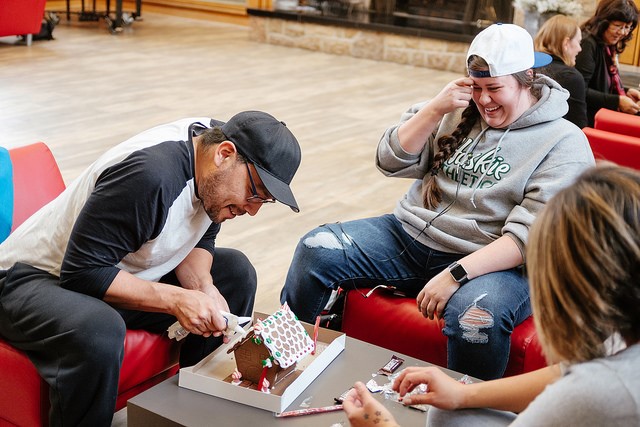
ASAP experience inspires law student to give back to program
Data show ASAP is having a positive impact on undergraduate Indigenous student retention, sense of belonging and academic confidence
By Shannon Boklaschuk
The College of Arts and Science’s Aboriginal Student Achievement Program (ASAP) has had a big impact on Taylor Roufosse.
Roufosse, who is currently studying in the College of Law at the University of Saskatchewan (USask), was part of ASAP in 2015-16 when she was a first-year arts and science student. She wasn’t aware of the program until she started her post-secondary studies and connected with Aboriginal student advisor Kayla Goshulak.

Roufosse, an Indigenous student from Saskatoon, was hesitant about participating in ASAP at first, as she wasn’t sure if it would be the right fit for her. She is now glad she joined the program and she also encourages others to get involved.
“There’s just like-minded students all in one place, and they’re there to support one another,” she said. “I definitely got that from different students and I’m still in connection with some of them.”
Established in 2012, ASAP welcomes Indigenous students to the College of Arts and Science through academically grounded programming that builds their confidence, knowledge and skills, while connecting them to one another and to the campus community.
ASAP offers popular first-year courses, small class and cohort sizes, culturally responsive instructors, subject-specific tutorials, peer mentorship, personalized advising through the Trish Monture Centre for Student Success, financial advocacy and bursaries and support with inter-college transfers, professional college admissions and career preparation. There are also ASAP celebrations and cultural engagement opportunities throughout the year.

In an effort to give back to the program and to inspire current ASAP students, Roufosse attended the ASAP term-end lunch on Nov. 26, which provided students, alumni, Elders and ASAP staff members an opportunity to relax and enjoy a meal before the start of final exams.
Roufosse spoke at the event and offered the students some words of encouragement, while reflecting on how she felt as a first-year student.
“I just remember my first round of finals, and it was absolutely terrifying. You have no idea what’s going to happen; you don’t really know the process of a final and anything,” she said. “I just kind of talked to them about how I got to this point and what it took for me to be successful in undergrad.”
Roufosse said many positive things resulted from her involvement with ASAP, including scholarships, an award, public-speaking opportunities, relationships with professors and students and ongoing connections.
“Being now in law, I thought it was important to give back to a program that I think was instrumental to getting me to this place in my education,” she said.
Dr. Sandy Bonny (PhD), coordinator of ASAP & STEM pathways, said data show ASAP is having a positive impact on undergraduate Indigenous student retention, sense of belonging and academic confidence. She is excited to see where ASAP students are going.

“It’s amazing to hear from students like Taylor who have followed a sightline from first year on up and now want to share back to the program and see its benefits inspire other students. Mentorship and peer connections are a huge part ASAP’s approach to building a community for learning,” she said.
Bonny said there are many variables that come into play in the design of the program, but what unites them is that ASAP is designed and adapted with the student experience—and the goals of the students and their communities—in mind.
Goshulak said stories like those shared by Roufosse bring her joy, because they show ASAP is making a difference for students during their academic journeys. Goshulak is happy to see students wanting to give back as a result of the impact ASAP has had on their lives.
“ASAP is so successful because of the supportive community that it has,” said Goshulak. “Our faculty are engaged with students, our peers mentors offer excellent mentorship and guidance, the ASAP staff create safe spaces for students to come chat and work on academic skills and, ultimately, we have events like this term-end lunch that are fun.”

